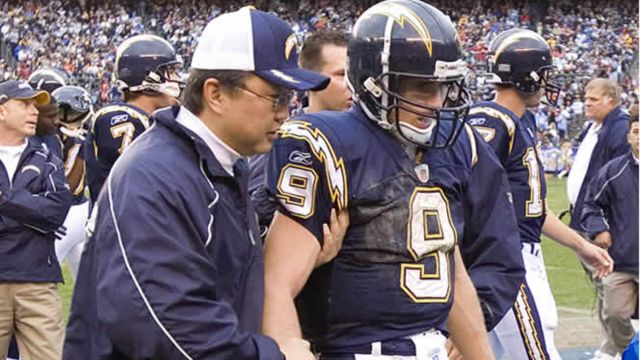Drew Brees stands as one of the most exceptional quarterbacks in the history of the NFL, boasting records for career passing yards, completions, and completion percentage. A Super Bowl champion, Super Bowl MVP, 13-time Pro Bowler, and two-time Offensive Player of the Year, Brees’ illustrious career nearly faced a premature end in 2005 due to a severe shoulder injury. This blog post delves into the details of his injury, the subsequent surgery, and his remarkable recovery.
His Injury
Brees suffered a critical shoulder injury during the final game of the 2005 season with the San Diego Chargers. A hit by Denver Broncos safety John Lynch left his right arm twisted and bent, resulting in a dislocated shoulder, a torn labrum, and a partially torn rotator cuff. The complexity of these injuries posed a serious threat to his quarterback career.
The shoulder, comprising bones, ligaments, tendons, and muscles, allows versatile arm movement. The labrum, a cartilaginous ring stabilizing the shoulder joint, and the rotator cuff, a group of muscles facilitating arm rotation, were both damaged. Such injuries can significantly impair shoulder function and strength, impacting the ability to throw.
His Surgery
Opting for surgery, Brees chose Dr. James Andrews, a renowned orthopedic surgeon with a track record of treating elite athletes. The two-and-a-half-hour surgery, conducted on January 5, 2006, in Birmingham, Alabama, involved relocating the shoulder, repairing the torn labrum, suturing the partially torn rotator cuff, and addressing inflammation and scar tissue in the joint. Dr. Andrews expressed optimism about Brees’ recovery, highlighting his determination and work ethic.
His Recovery
Brees faced a challenging recovery involving extensive physical therapy and rehabilitation. Wearing a sling for six weeks, he adhered to a rigorous exercise regimen to regain shoulder mobility and strength. Uncertainty loomed as a free agent, rejected by the Miami Dolphins on a failed physical exam and offered a lowball contract by the Chargers. The New Orleans Saints took a chance on Brees, signing him to a six-year, $60 million contract in March 2006.
In the face of adversity, Brees excelled, leading the Saints to a 10-6 record and their first NFC Championship Game appearance in 2006. Named the NFL Comeback Player of the Year, he continued breaking records, culminating in the 2009 Super Bowl victory, where he was crowned Super Bowl MVP. Brees solidified his legacy as one of the greatest quarterbacks, particularly in the hearts of the resilient New Orleans community.
Conclusion
Drew Brees’ shoulder surgery marked a pivotal moment in his career, transforming him from a potential casualty to a legendary champion. His resilience and perseverance against career-threatening odds serve as an inspiration, making him not just a quarterback but a hero, leaving an indelible mark on the sport and the lives he touched.

